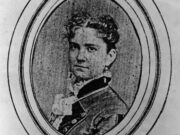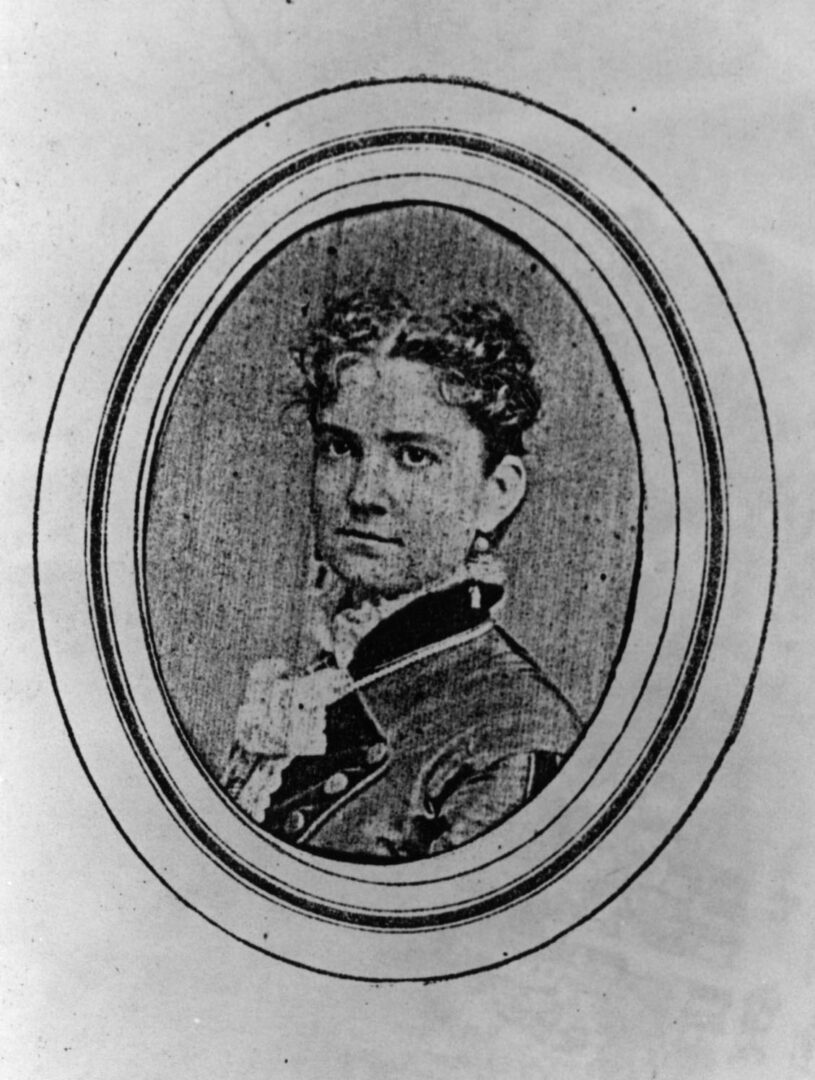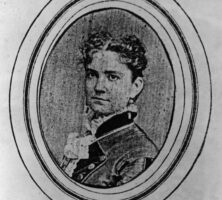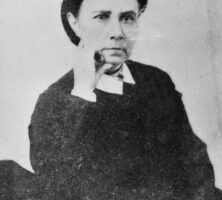During the Civil War (1861-65), women across the South took on new roles to support their families and the Confederacy. Women in Georgia proved no exception. The war provided elite white women with opportunities to take part in the public sphere. They often voiced their opinions about events, and they filled roles previously held by men. For poor white women, the war proved less liberating, as the demands of the war and economic hardship created major challenges in supporting themselves and their families. By 1865 the war and emancipation had also transformed the lives of African American women.
Elite White Women
The interest in the sectional crisis for many white Georgia women began prior to the outbreak of hostilities. After the election of U.S. president Abraham Lincoln in 1860, women who held people as property pushed the men of their families to support secession by appealing to their sense of familial duty. The enthusiasm of many did not wane upon the vote for secession on January 19, 1861.
Planters’ wives and other elite women often rejoiced that their state had finally broken from what they saw as the Union’s oppressive hold. Although the horrors of war would later dampen much of this initial enthusiasm, many white Georgia women took an active and educated part in the movement to separate the South from the North.
When the hostilities began, many women encouraged their husbands to enlist by appealing to their manhood and sense of honor. Women throughout the Confederacy treated shirkers with scorn, often shaming them into service. Single women publicly declared that they would date or marry only those who volunteered to serve, and kinswomen urged their loved ones to fight for the Southern cause.
As they encouraged men to enlist, white women revealed their confidence in their own abilities on the Georgia home front. With the men gone, their wives, mothers, sisters, and daughters assumed the management of their homes, farms, plantations, and businesses. By working their own fields, as well as taking jobs in local industries, Georgia women provided Confederate troops with food, uniforms, and other necessities.
More affluent women also engaged in voluntary activities on the home front that proved vital to the Confederacy. Like women throughout the South, they formed aid societies to provide soldiers with socks, undergarments, shirts, gloves, blankets, shoes, comforters, handkerchiefs, scarves, bandages, and food. In more isolated areas, women worked as individuals to send supplies to the soldiers. They also planned and attended bazaars, fairs, concerts, raffles, and dances to raise money for army supplies and even sponsored specific Confederate gunboats through fund-raising drives.
In addition, white women took on the traditionally male occupation of nursing during the Civil War, taking care of the Confederacy’s wounded as best they could. Because many Georgia towns became battlefields during the war, local women often inadvertently became frontline nurses. Hospitals were set up anywhere—homes, churches, town halls, and streets. Other women left their homes to care for wounded troops on the front lines, seeing battle and its ravages firsthand.
Class Distinctions
Poorer women were often far more vulnerable to the war’s devastation than were elite enslavers. The wives and children of yeomen farmers had far fewer resources to draw on when left to their own devices, and many experienced food shortages as early as 1862. Governor Joseph E. Brown’s papers are filled with letters from indigent women seeking relief, in terms of either food and farm supplies or exemptions for their husbands and other male relatives from military service. Neither sort of request met with much response from the state government until the war’s midpoint, when it implemented sporadic efforts at relief for soldiers’ wives and widows through the distribution of corn or grain, and sometimes money. Wives of deserters or Unionists were usually denied any share in such relief.
In such urban areas as Macon, Augusta, and Columbus, poor women sometimes found work in factories or arsenals, though those operations often closed well before the war’s end. In Savannah “needle women” were hired by the state to sew uniforms and tents for the Confederate cause, but only until the Union blockade forced that enterprise to fold and move elsewhere in the state.
Many Georgia women grew desperate by the war’s midpoint. This desperation led to the widespread looting of stores and raids on warehouses by groups of destitute women, often driven by hunger. Such riots occurred in major cities and small towns. In April 1863, for example, sixty-five women, some armed with pistols and knives, moved down Broad Street in Columbus, looting several stores before police were able to restore order. Dozens of such incidents throughout the state served to undermine support for the war and led many soldiers to desert the army and return home to take care of their families.
Sherman’s March
Georgia’s civilian population faced its greatest trial during Sherman’s 1864 campaign. After a four-month campaign for Atlanta, Union general William T. Sherman and his troops took control of Atlanta on September 2. Once in command of the city, Sherman issued Special Field Order No. 67, which forced the evacuation of the city’s more than 1,500 civilians. When confronted with vehement protests from Confederate officials and civilians, Sherman asserted that a hostile civilian population would not only impede military activities but also unnecessarily burden the Union army.
Sherman and his troops left Atlanta on November 15, burning many homes on their march to the sea. As the soldiers made their way southeastward toward Savannah, they terrorized the white women in their path. The Union assault on the home front, however, did not necessarily deter elite Georgia women from their dedication to the Southern cause. Instead, the invasion served as impetus for some women to increase their support of the Confederacy, continuing to send items to the soldiers on the front lines. For other women, Sherman’s march merely intensified the pleas for their men to abandon the military and return home.
The Civil War also created opportunities that allowed enslaved women to make the war their own. For most, this meant escaping from bondage, protecting children, and reuniting with family members whenever possible. Some enslaved people took advantage of lessened oversight on their plantations and fled. More frequently, enslaved women capitalized on the approach of invading Union troops. During Sherman’s march, for example, so many enslaved women escaped to Union lines that soldiers complained of the “helpless women and children” who followed them and ate their rations.
Individual Portraits of Women at War
The most familiar portraits of women in wartime Georgia are fictional, most notably in two of the most popular novels about the Civil War and Reconstruction South. Margaret Mitchell’s Gone With the Wind (1936) and Margaret Walker’s Jubilee (1966) portray two very different Georgia women and their contrasting plights over the course of the war. Mitchell’s novel centers on Scarlett O’Hara, the daughter of an upcountry planter, while Walker’s novel follows Vyry, an enslaved woman on a southwest Georgia plantation for whom the war takes on very different meanings, including her emancipation at its end.
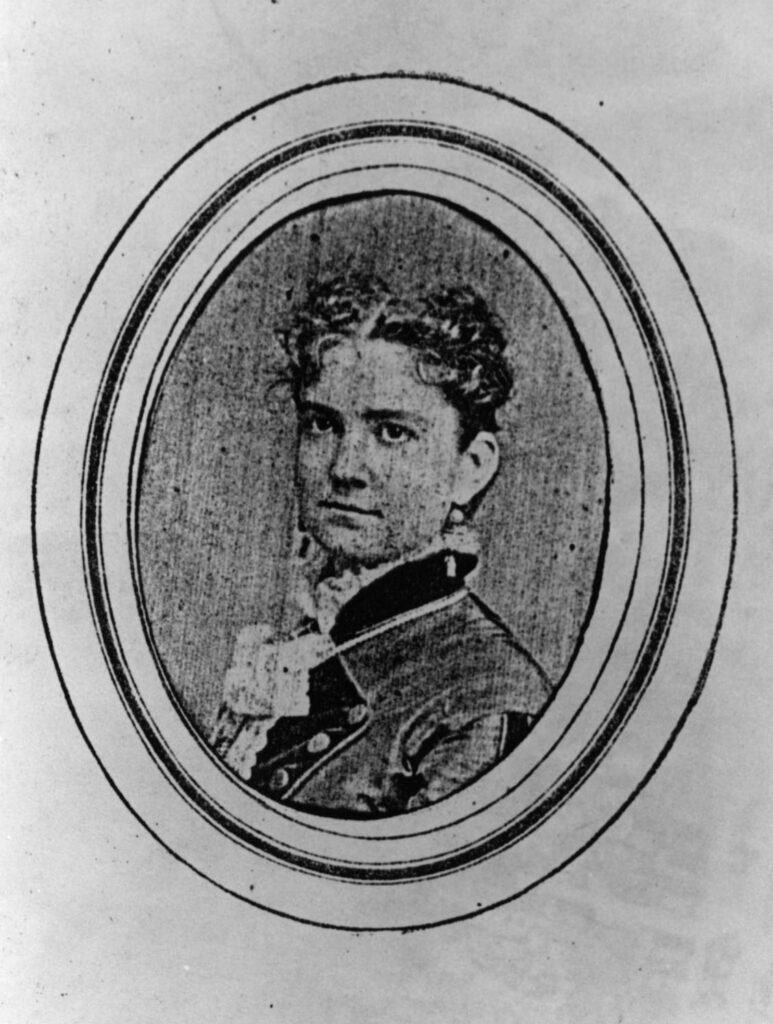
Courtesy of Atlanta Historical Society
A number of real Georgia women left vivid autobiographical accounts of their wartime experiences. The narrative of Eliza Frances Andrews, published in 1908 as The War-Time Journal of a Georgia Girl, 1864-1865, was one of the best-known. In it Andrews recounts her flight from her home in Washington, Georgia, across the state to take refuge from Sherman’s troops at her sister’s plantation in southwest Georgia, south of Albany.
Two women in the Atlanta area provided detailed accounts of civilian life there through the upheaval and dislocation brought on by Union forces in 1864: Mary Harris Gay of Decatur in Life in Dixie during the War (1892), and Sallie Clayton, an adolescent at the time, whose memories of her own and her family’s ordeal, recorded just after the turn of the century, were published in 1999 as Requiem for a Lost City.
Not all Georgia women supported the Confederacy. Several non-southerners moved to Georgia not long before the war broke out, and left records of their efforts to maintain their loyalties to the Union. Cyrena Stone, a Vermont native living in Atlanta, kept a diary of her experiences as a secret sympathizer of the Union and of her interactions with other Unionists in the city, which historian Thomas G. Dyer has chronicled in Secret Yankees (1999). Chicago native Eleanor “Nellie” Kenzie Gordon, later the mother of Juliette Gordon Low, had married Willliam Washington Gordon II, a Savannah native and Confederate captain. Gordon found herself a newlywed living in Savannah with her Confederate in-laws during the war and had to suppress her own Northern loyalties, even as her uncle, Union general David Hunter, led the forces that captured Fort Pulaski in 1862.


